Gwalior Fort is an 8th-century hill fort near Gwalior, Madhya Pradesh, central India. It was famously described as ‘the pearl amongst fortresses in India’. The fort consists of a defensive structure and two main palaces, Gurjari Mahal and Man Mandir, built by Man Singh Tomar.
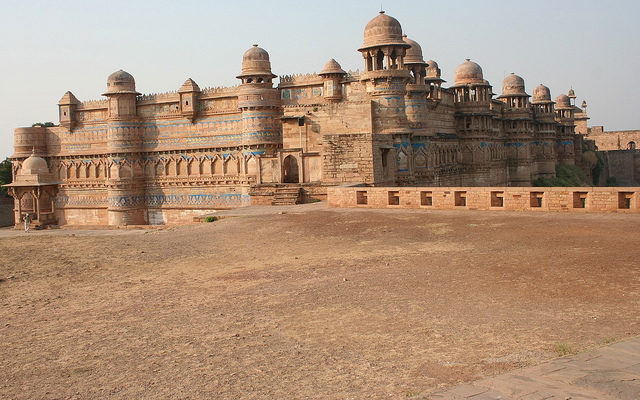
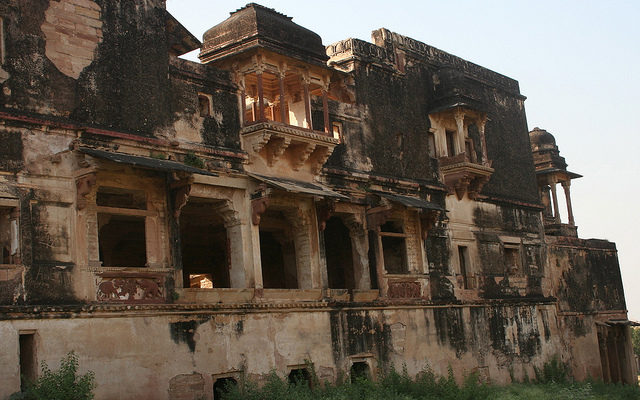
The fort spreads out over an area of 3 square km, surrounded by concrete walls of sandstone. There is a horizontal stratum, 342 feet at its highest point. The stratum forms a near-perpendicular precipice. A small river, Swarnrekha, flows close to the palace.
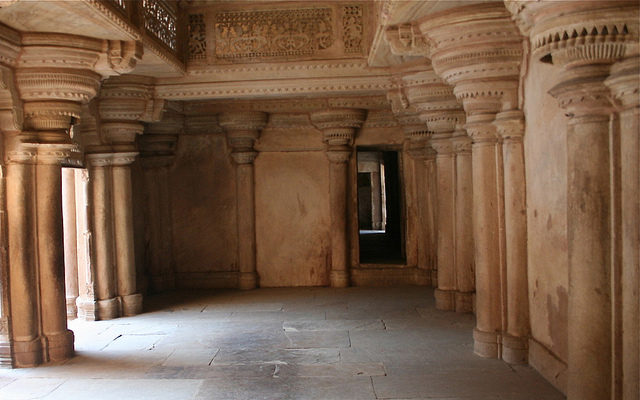
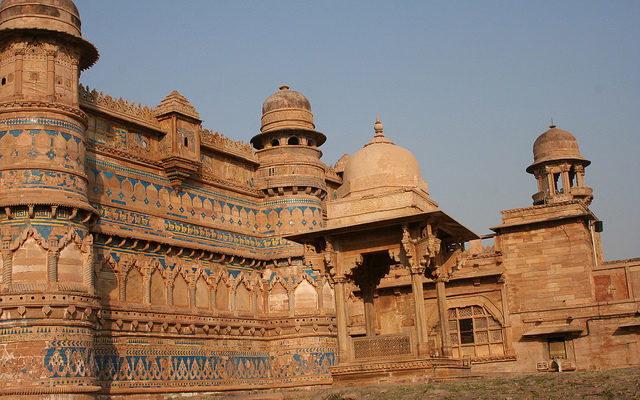
There are two gates, one on the northeast side with a long access ramp and the other on the southwest. The main entrance is the ornate Elephant gate and the other is the Badalgarh Gate.
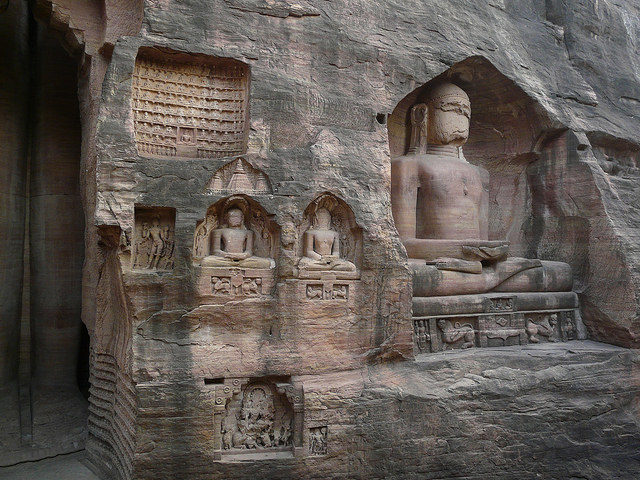
The Man mandir palace was built by the King of Tomar Dynasty –Maharaja Man Singh in the 15th century for his favorite queen, Mrignayani. The Man Mandir is also called a Painted Palace because the painted effect of the mandir is due to the use of styled tiles of turquoise, green and yellow used extensively in a geometric pattern.
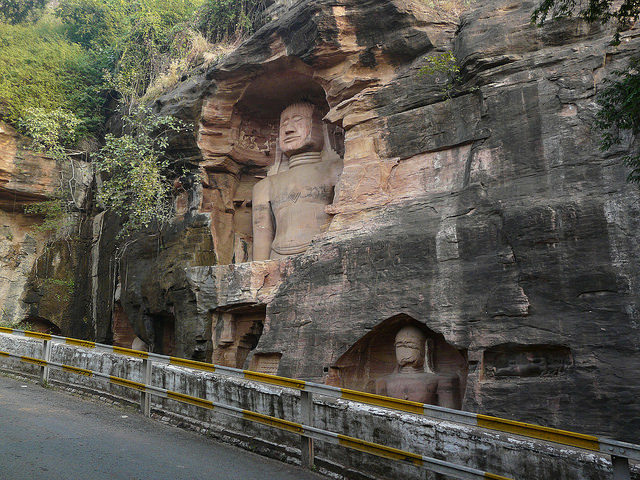
Man Singh’s queen demanded a separate palace for herself with a regular water supply through an aqueduct from the nearby Rai River. He built the Gujari Mahal for that purpose. The palace has been converted into an archaeological museum. Rare artifacts at the museum include Hindu and Jain sculptures dated to the 1st and 2ng centuries BC.
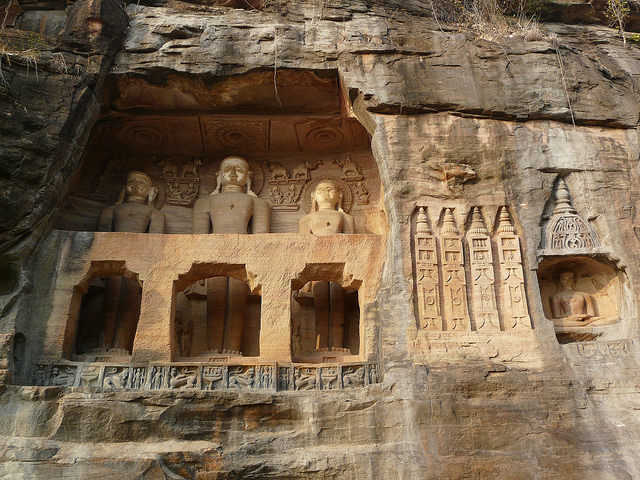
The entire area of Gwalior fort is divided into five groups namely Urvahi, North West, North East, South West and the South East areas. There are 24 idols in the padmasana, 40 in the kayotsarga and around 840 idols carved on the walls and pillars in the Urvahi area.
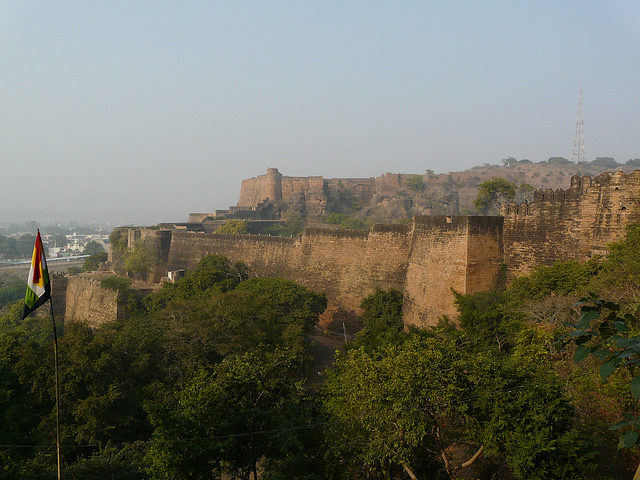
The fort has been controlled by a number of different rulers in its history.
We have more medieval stories:The Shambles: One of Britain’s best preserved Medieval streets
Their influence is clearly seen in the many regal structures that dominate the cityscape. In a sense, Gwalior continues to retain a medieval majesty.
